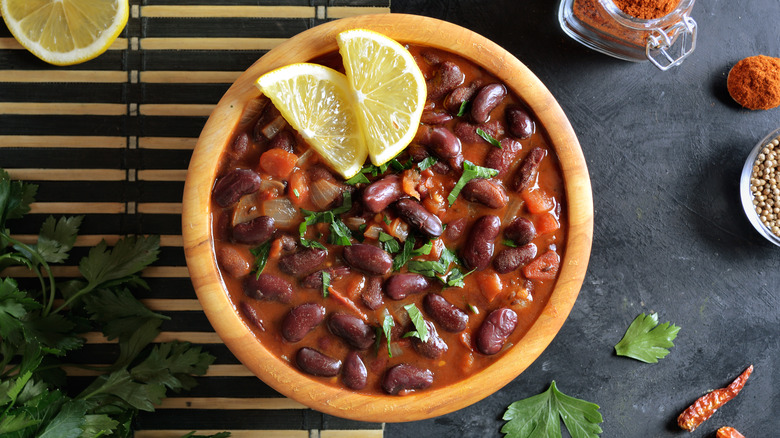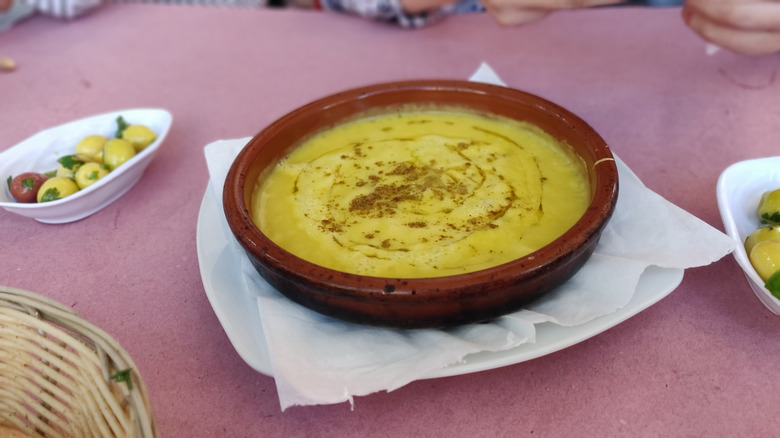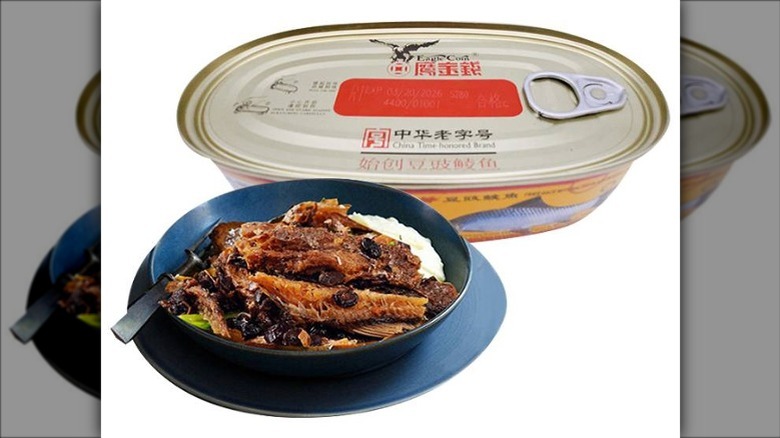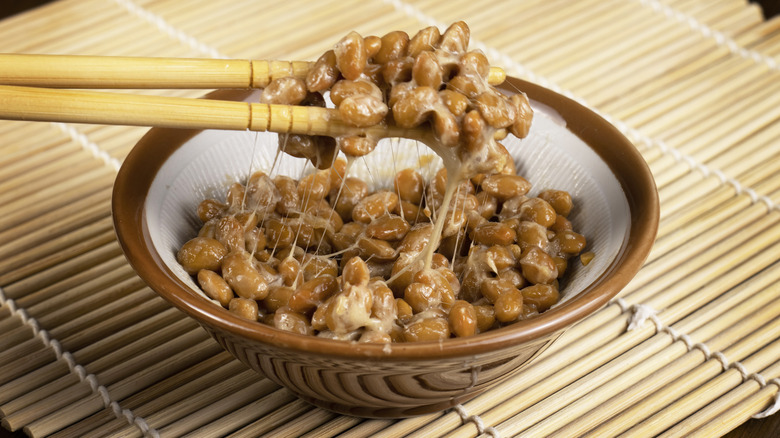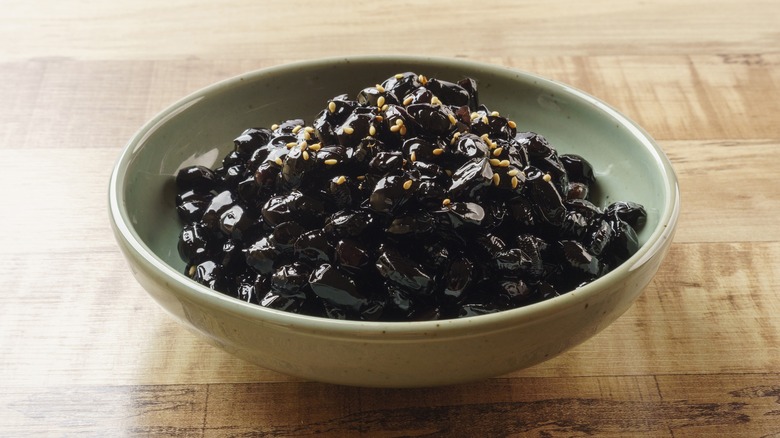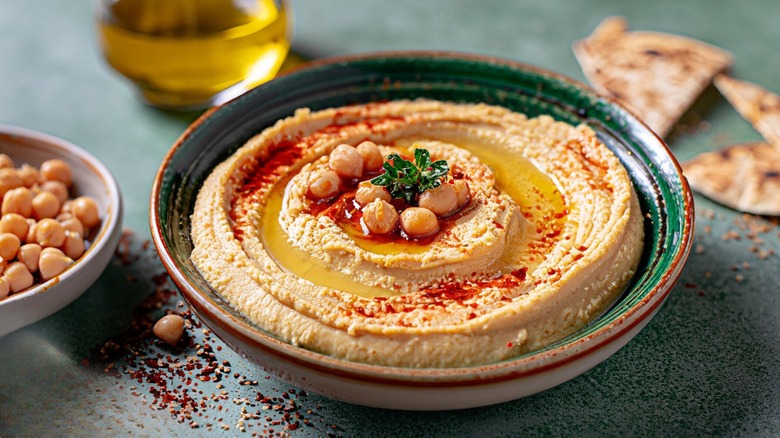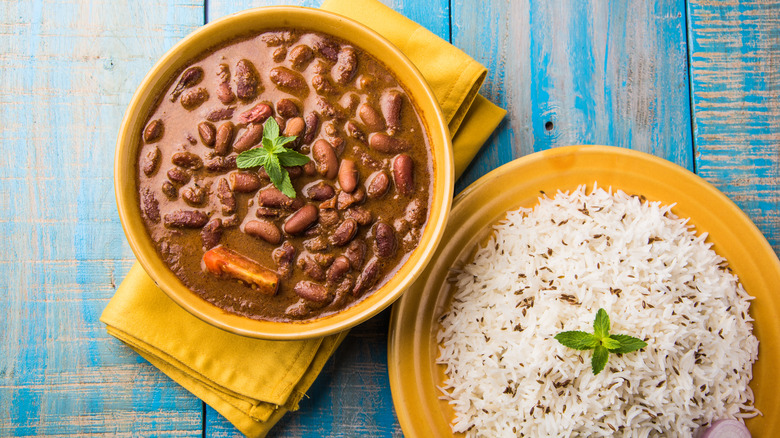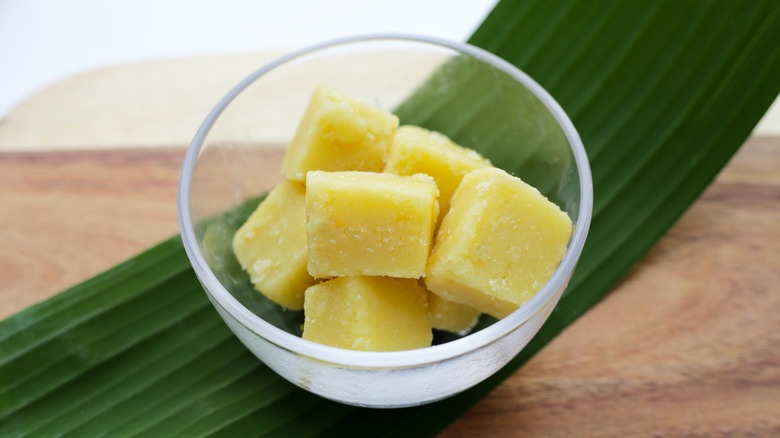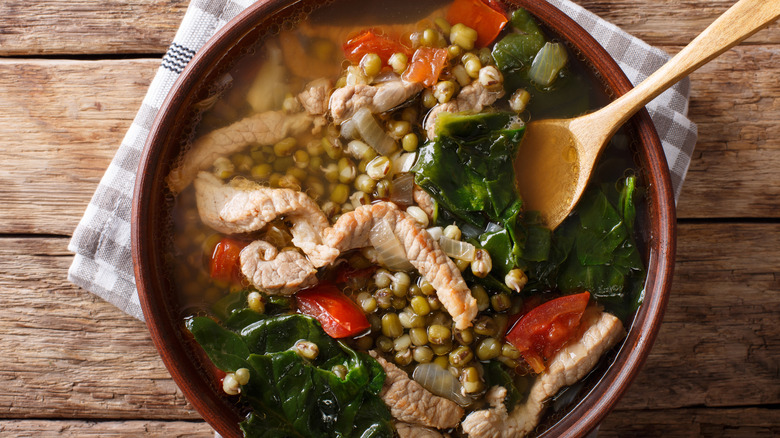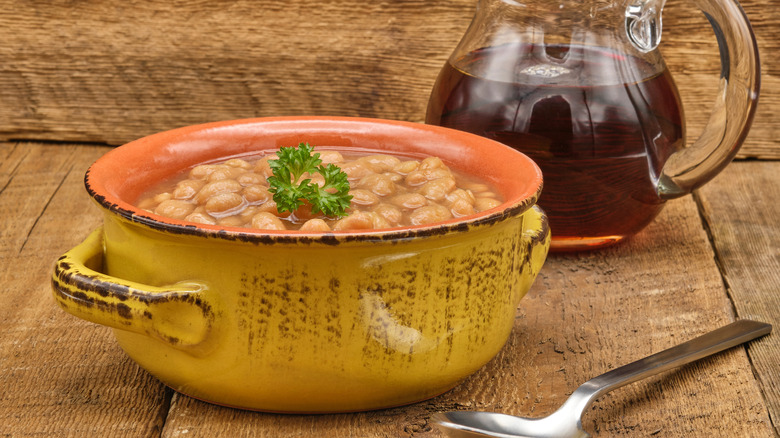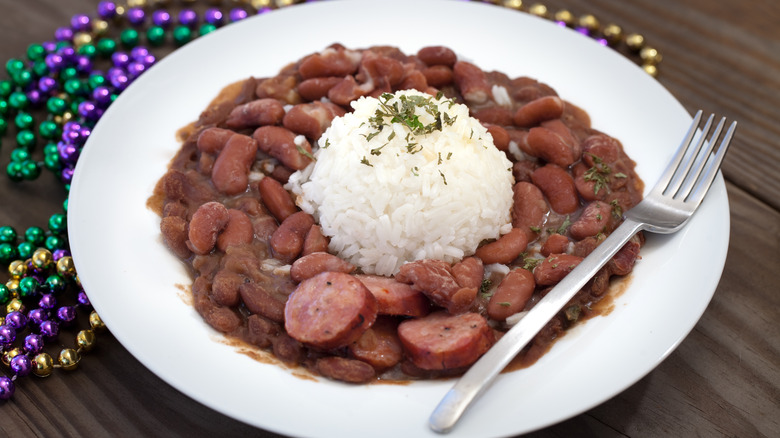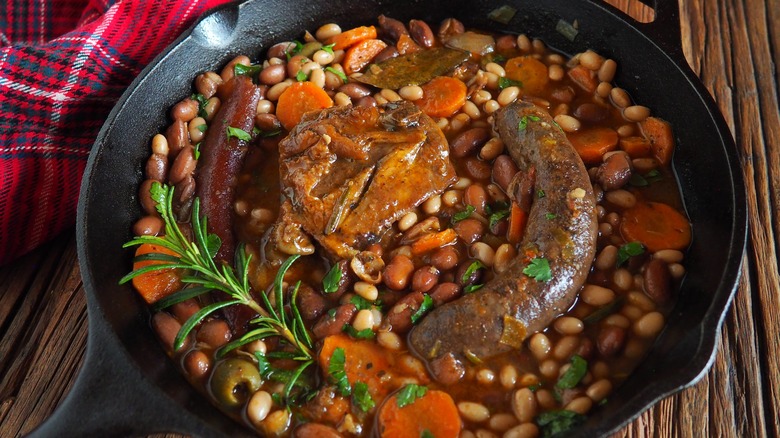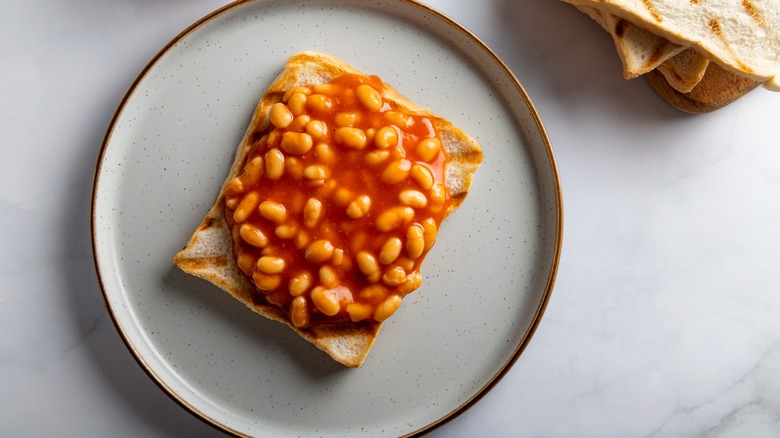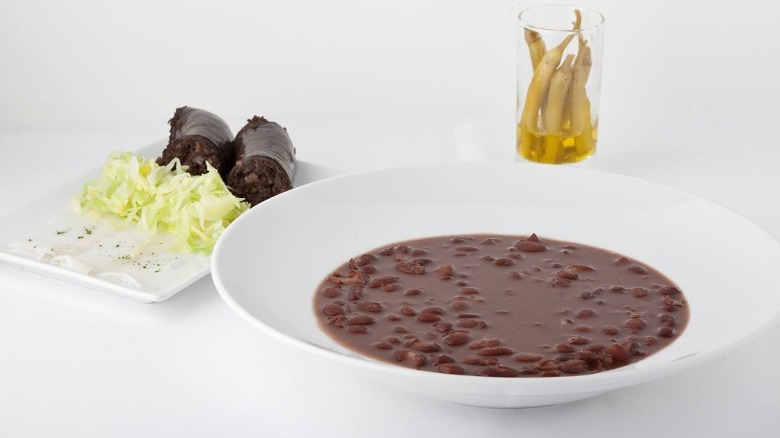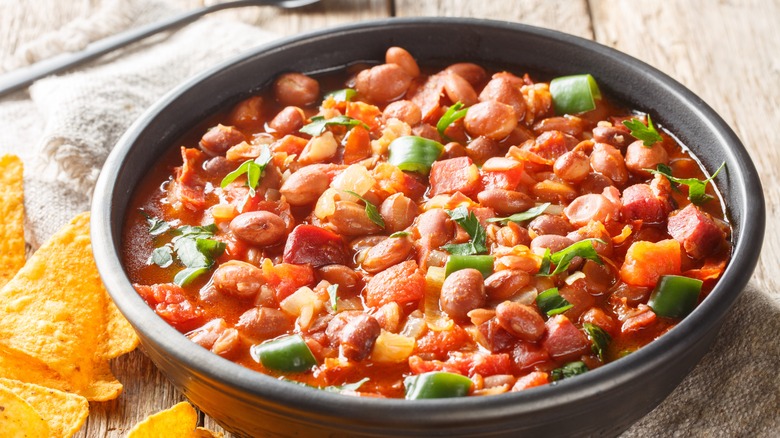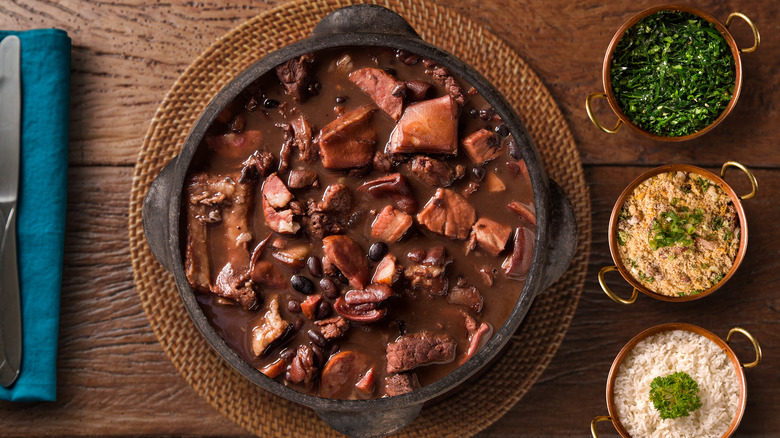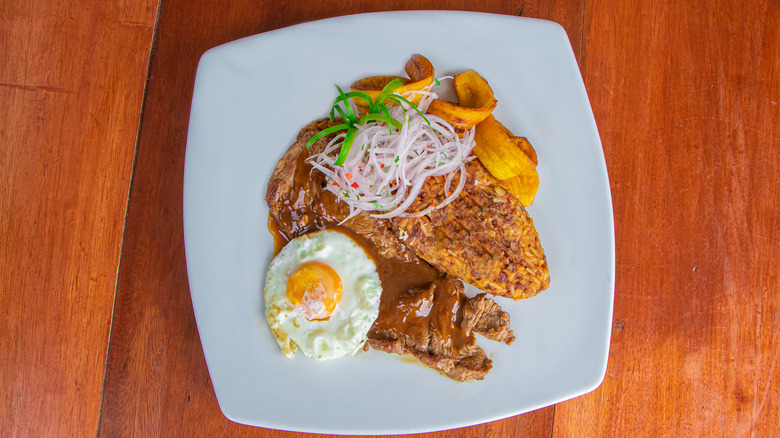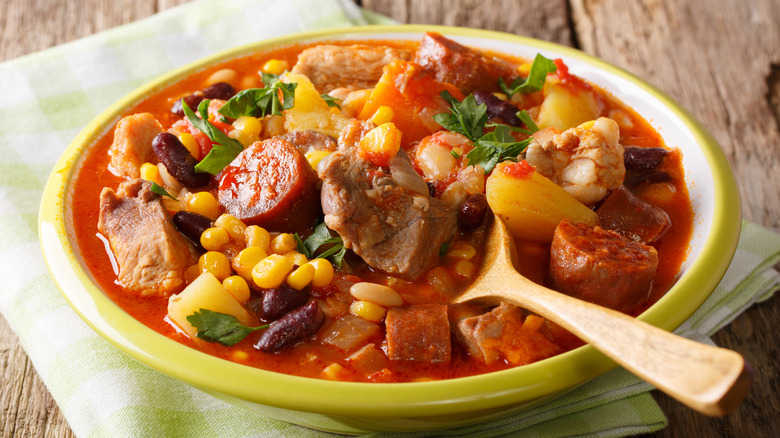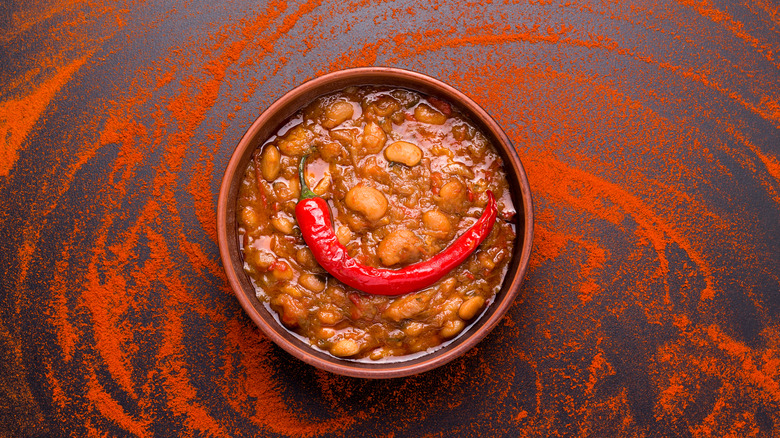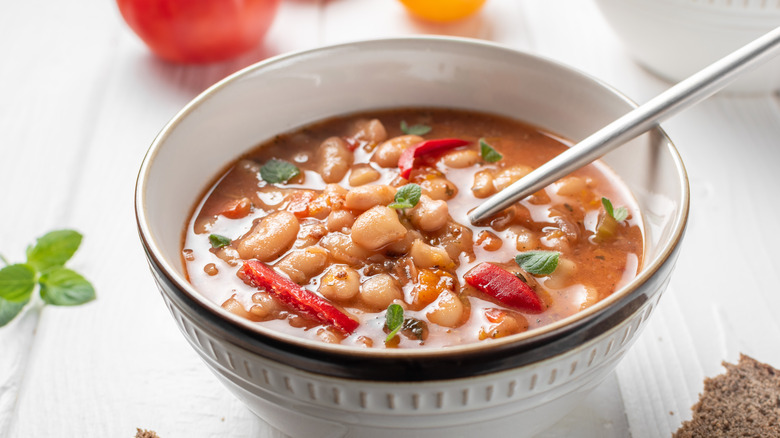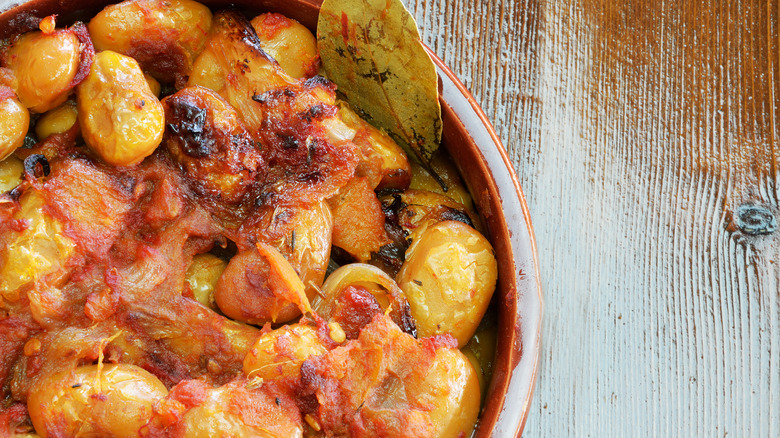21 Bean Dishes That Are Enjoyed Around The World
Beans, or pulses, are the edible seeds of plants from the Fabaceae (aka Leguminosae) family. With nearly 20,000 species, this is the third largest of all flowering plant families. While wild species of beans may have originated in Central and South America, they are now grown and consumed in countries across the globe.
Beans are nutritional powerhouses, containing protein, fiber, minerals, phytochemicals, and slow-digesting resistant starches. When part of a healthy diet, they may promote digestive health and combat chronic diseases, including diabetes, cancer, and cardiovascular disease.
In addition to their myriad health benefits, beans are also considered a versatile, environmentally friendly, and cost-effective food source that can be an integral part of the future of feeding an increasing global population. Their lengthy shelf life can eliminate food waste, and their suitability for varying dietary restrictions, medical, cultural, or religious, makes them a desirable food source for a wide swath of the international population.
Indeed, cultures across the planet have creatively and deliciously incorporated beans into their daily culinary habits. Many of these dishes take advantage of distinct ingredients and cooking methods unique to each country. Read on to discover the diverse bean dishes that are enjoyed around the world.
1. Egypt: Ful medames
Ful medames, or fūl, is a stew-like dish cooked from fava beans. While the dish can be found across North Africa and the Middle East, its origins hail from Egypt, likely dating back to pharaonic times. Known as the national dish of Egypt, this recipe likely gets its name from how it was historically made overnight on hot ashes in a clay pot known as a damassa.
Today, fūl is considered an inexpensive, nourishing breakfast meal consumed by Egyptians of all walks of life. Ful hamam, a petite variety of fava bean, is typically allowed to simmer overnight until the beans are impossibly tender. The resulting dish may or may not be mashed before it is seasoned with spices, aromatics, olive oil, and lemon juice. It is served with Egyptian flatbread, known as eish baladi, and garnished with hard-boiled eggs, tahini sauce, or tomatoes.
2. Morocco: Bissara
Bissara, or bessara, is a purée cooked from rehydrated split fava beans or green peas that is popular across Morocco. While particularly beloved in northern Morocco, this dish is a regular offering, both at home and by street food vendors, for any meal, any time of day. It can be eaten as a dip with Moroccan bread known as khobz or thinned into a soup.
The slow-cooked beans or peas are elevated by adding garlic, olive oil, paprika, cumin, and lemon juice. For those who prefer their food on the spicy side, a chili paste called harissa that is common across the region known as the Maghreb, including Morocco, Tunisia, Algeria, and Libya, may be added for flavor and color. Bissara is a comfort food and an affordable, healthy dish that can be shared communally, typical of Moroccan meals.
3. China: Fried dace with salted black beans
Fried dace with salted black beans is a delicacy born from necessity in the southern Chinese province of Guangdong around the late 1800s. During this time, workers from the region often relocated to countries across Southeast Asia, where they needed familiar and affordable food sources. These cans of fish and beans were the answer they were searching for.
The fried dace, a type of carp sourced from the fresh waters of the Pearl River Delta, is petite, salty, and on the toothsome side, with crunchy little bones that are perfectly edible. They are canned alongside fermented whole black beans that are tender, smoky, and brimming with umami-rich flavors. All this is soaked in an oil infused with the salty and savory tastes of the fish and beans. While this can be enjoyed straight out of the can over rice, it is often stir-fried with vegetables.
4. Japan: Natto
A specialty of Japanese culinary tradition, natto is made of soybeans fermented after introducing Bacillus subtilis bacteria. This fermentation process results in beans that are mucilaginous in texture and funky in aroma. They have a slightly nutty, earthy acquired taste. Natto is eaten regularly for breakfast by the Japanese for its myriad purported health benefits attributable to its abundant gut-friendly probiotics, protein, nutrients, and fiber.
Natto is seldom consumed as is. It is often combined with soy-based seasonings, a Japanese mustard known as karashi, and green onions and served over hot rice. It can also be spread over bread layered with Japanese mayonnaise and topped with cheese before getting toasted for a hip spin on avocado toast. Lastly, natto is commonly added to egg dishes of all kinds, including tamagoyaki, a Japanese rolled omelet.
5. South Korea: Kongjaban
Kongjaban, or kongjang, pronounced "kong ja-bahn," is a classic Korean banchan, or side dish, made from black soybeans. These beans are often prepared in bulk and used throughout the week for multiple meals. They can accompany any dish, from soups and stews to meat dishes.
The preparation begins by soaking the black soybeans. It is important to note that black soybeans differ from black beans and cannot be used interchangeably. When unavailable, yellow soybeans may sometimes be substituted. Once the black soybeans are soaked, they are braised in a salty, acidic, and sweet combination of soy sauce, rice wine, and sugar until tender. They should be cooked thoroughly but not to the point of being mushy. The glory of kongjaban is that they are al dente, creating a beautiful juxtaposition of flavor and texture to myriad Korean delicacies.
6. Middle East: Hummus b'tahini
Hummus, or hummus b'tahini ("hummus" means "chickpeas"), is a dish consumed by cultures across the Middle East. This combination of chickpeas with tahini paste, lemon juice, and garlic has regional variations that provoke passionate reactions from citizens of each country. Disputes have long existed over who can claim ownership of its invention, including the so-called "Hummus Wars" between Lebanon and Israel, which resulted in the creation of a 23,042-pound, 12-ounce portion of the dish on May 8, 2010, by the Lebanese that holds the Guinness World Record for the largest serving of hummus to this day.
Regardless of the country of origin, the importance of this dip cannot be understated. It is a staple that has become a global phenomenon. No matter who made it first, hummus is delicious whether eaten on pita, served with ground lamb, or used as a spread for a falafel sandwich.
7. India: Rajma masala
Rajma masala is a dish that is quintessentially North Indian. The combination of red kidney beans slow-cooked with onions, tomatoes, and spices served over rice is a comfort food that appears to have lengthy roots among Punjabis despite its relatively recent introduction into their culture. Indeed, the bean and the tomato are hardly indigenous to Asia. They are a legacy of colonization, hailing from the New World. They journeyed across the Atlantic in the 1500s during the Columbian Exchange.
While the precise conduit by which these ingredients made their way to Northern India is disputed, most theories point toward Portuguese or French colonists. They have since become staples of the Northern Indian diet, with the beans providing affordable, nutrient-dense sustenance, particularly during the colder months.
8. Vietnam: Mung bean cake
Mung bean cakes are a delicacy from Hai Duong, the capital city of a province of the same name located in Northern Vietnam along the Red River Delta. Legend has it that during the mid-20th century, King Bao Dai paid a visit to this city, where, upon sampling this treat, he bestowed his commendation upon it, after which it has been sold with the image of a golden dragon on its label.
What has made these treats so special is the unique combination of roasted, ground mung bean flour, sugar, oil, and the essential oils extracted from grapefruits. The fluffy, nutty, floral, and sweet cakes are ideal when served with savory soups or bitter teas that temper their sweetness. It is a specialty that connects generations, nourishing them both nutritionally and spiritually, and it has become one of the most popular souvenirs obtained from Vietnam.
9. Philippines: Ginisang munggo
Munggo, or monggo, is the Filipino term for mung beans, a pulse consumed regularly across Asia. They are often fashioned into a dish known as Ginisang munggo, a combination of mung beans, garlic, onions, spinach, tomatoes, and pork. This dish is served across the country in various iterations, including vegetarian ones. It is an inexpensive, nourishing comfort food that epitomizes the flavors of the Philippines and may be served in homes, restaurants, or food stalls.
This soup-like stew is often served on Fridays, likely a relic of Catholic Lenten rituals of abstaining from meat on that day, though it can be found on other days of the week. Munggo is an ideal accompaniment to sud-an, or savory dishes without sauce, including crispy chicken and barbecued fish.
10. Canada: Feves au lard
Feves au lard, or beans with bacon, is a quintessentially Canadian dish from the province of Quebec that resembles what Americans recognize as baked beans. The primary difference between the two is the presence of Canada's legendary maple syrup instead of molasses to sweeten the navy beans.
Though popular across the country, this dish has a heritage dating back to pre-colonial times, before French and English settlers arrived in Canada in the 16th century. Indeed, indigenous people had a well-established tradition of slow-cooking beans with pork fat and maple syrup in clay pots over hot coals. The modern iteration of the dish has spread beyond the borders of Quebec thanks to the proliferation of canned beans, making it an affordable, nourishing treat you can enjoy anytime. Despite being readily available, you can still find this dish in any cabane à sucre in Montréal, served alongside a hearty breakfast.
11. United States: Red beans and rice
The importance of red beans and rice to the culture of the Big Easy in particular and Louisiana more broadly cannot be understated. Its heritage runs deep, with some theories suggesting it was a staple for enslaved sugar plantation workers. Others link it to the Acadian migrants who came from Canada and settled in the area in the 1750s, eventually becoming the Cajuns of today.
Perhaps the most accepted theory involves the popularity of slow-cooking red beans with ham hocks on laundry day, which always fell on Mondays. This labor-intensive task occupied women's time, necessitating the creation of a simple, cost-effective meal that took little attention. The dish may look somewhat different today, with various gourmet iterations available, but it remains a celebration of the resilience of the people of New Orleans and an expression of the inclusivity that comes with sharing a meal.
12. France: Cassoulet
Few dishes inspire heated debate as to the origin and authenticity of a recipe as the French cassoulet. The dish, which gets its name from the cassole, the conical earthenware pot in which it was originally made, is a delicacy across Southwestern France. Each village and chef has their own iteration, of which they are fiercely proud. What remains constant between them is that the dish is slow-cooked and made from beans combined with meat.
Beans were not introduced to France until the Columbian Exchange beginning in the late 15th century. After this, they were widely cultivated across Southern France. Common beans included are Coco (also known as Tarbais), flageolet, or fresh favas harvested in the spring. Meats can vary from mutton to duck confit to sausage. These are all combined and simmered to perfection for a hearty and delectable one-dish meal that can feed a crowd.
13. Great Britain: Beans on toast
Beans on toast is as quintessentially British as the royal family and fish and chips. Heinz baked beans are so beloved by Brits that Queen Elizabeth proclaimed them a part of British identity in 2019. Yet their origins are less British than one would think. Heinz baked beans were introduced in the U.S. by German immigrant H.J. Heinz. These beans found their way to the U.K. in the 1880s and were soon sold by the luxury grocer Fortnum & Mason in London.
In 1928, a Heinz factory was opened in Harlesden, London, where "Victory Beans" were manufactured throughout World War II. In 1959, the largest baked bean factory in the world was erected in Wigan and exists to this day, fueling the insatiable appetite Brits continue to have for this humble comfort food.
14. Spain: Alubias de Tolosa
Every year for one week in November, citizens of the Basque village of Tolosa, Spain, celebrate babarrunaren astea, or "week of the bean." The bean at the center of this festival hails from Venezuela and is grown on small farms surrounding Tolosa. It is a distinctive bean with a deep burgundy color and a white dot in the middle. This bean is so revered for its unique velvety texture and luxurious creamy flavor that it has been granted the "Eusko Label Kalitatea" designation of origin.
Alubias de Tolosa are often prepared in a no-frills yet careful way, cooked at just the right temperature to slowly extract their natural starches, resulting in their notable texture. They are typically served with black pudding, chorizo, and piparras, cured green chilis indigenous to this part of Spain.
15. Mexico: Frijoles charros
Frijoles charros are a classic Mexican recipe for soup-like stewed pinto beans, historically slow-cooked over a campfire to help fortify the original Mexican horsemen or cowboys known as "charros." This heritage explains its common moniker, "cowboy beans." These beans differ from refried pinto beans because they remain intact rather than being pulverized into a creamy texture. It also shares similarities with its cousin, borracho beans, with the notable omission of beer.
This recipe often contains bacon or chorizo, jalapeños, tomatoes, and onions simmered in broth with spices. It can be served as a side dish with myriad Mexican specialties, like enchiladas or tacos, or as a hearty main dish with tortilla chips or a healthy hunk of cast iron cornbread.
16. Brazil: Feijoada
You will likely recognize this black bean stew made with cured pork or beef if you have dined at a Brazilian steakhouse or churrascaria. It is typically served alongside other staples, including farofa, fried plantains, steamed leafy greens, and potatoes, as an accompaniment to an endless parade of barbecued meat.
The origin story of feijoada is a source of debate. Some believe it was the product of enslaved people, while others point to European settlers. In each case, necessity was the mother of invention, inspiring people to feed themselves using what they had — beans and leftover meat. Whichever is correct, they both speak to what made feijoada so beloved — its affordability, ingenuity, and ease of preparation. Known as "food for the soul," this dish is often served for family gatherings or as a hearty, satisfying lunch, making it a beloved comfort food throughout Brazil.
17. Peru: Tacu tacu
Tacu tacu is less a recipe and more of a technique. Commonly made across Peru, tacu tacu falls under the parameters of what is sometimes called trash cooking, or a way to repurpose leftovers. Tacu tacu is produced from a stew of tender tan mayocoba beans, lentils, lima beans, or black beans, mixed with rice, and fried into a cake before being topped with meat or a fried egg. They are accompanied by a refreshing salad-like condiment known as zarza, which contains onions, cilantro, and the ají amarillo pepper.
The popularity of this cake is attributed to the colonial period when the technique was spread by the African diaspora across the Chincha and Cañete valleys of southern Peru. Its origins are more murky. In Quechua, the word "tacu" translates to "crushed," and in Swahili, "taka" is a generic term for food, suggesting this dish may be a fusion of cultures.
18. Cape Verde: Cachupa
Cachupa is a stew made from hominy and beans that is considered the national dish of the West African nation of Cape Verde (aka Cabo Verde). This country features ten islands, which were uninhabited until they were discovered by Portuguese settlers and colonized in 1462. The nation remained under Portuguese control until 1975, though Portugal's culinary influences are still seen in dishes like cachupa.
This dish is made in two iterations, rica and pobre. Rica, or "rich," adds myriad types of meat only accessible to those who can afford them. Pobre, or "poor," is made strictly with fish and vegetables, making it affordable for the masses. The basic recipe includes cabbage, cassava, banana, yam, carrots and other vegetables. Chorizo, pork, or chicken may be added to the meat version. Leftovers are often combined with eggs and repurposed into a hearty breakfast.
19. Macedonia: Tavče gravče
Tavče gravče is the crown jewel of North Macedonia and is considered its national dish. This bean stew combines a distinctive white bean from the region known as Tetovo. These are a creamy bean similar in texture to cannellini. The fresh beans are soaked for hours before getting slow-cooked in an earthenware pot known as a tava, along with onions, tomatoes, peppers, and spices until impossibly tender.
This dish was historically served on Fridays, when Orthodox Christians abstain from consuming meat. While this is still a common practice, the dish is now found on any day of the week in homes and restaurants alike. While the vegetarian iteration is standard, variations of this dish that are prepared with meat, like lamb or sausage, are not uncommon. Though similar dishes can be found in other Balkan nations, none are as well known or beloved as tavče gravče.
20. Bulgaria: Bob chorba
A Bulgarian comfort food, bob chorba is a rich, savory bean soup made with carrots, peppers, tomatoes, paprika, and dzhodzhen (bright spearmint), which gives it a distinctive fresh flavor. This soup was historically made in a clay pot over an open fire and served on Christmas Eve or during holidays requiring meatless dishes. Today, it is served anytime for a cost-effective, stick-to-your-ribs meal. While this dish is classically vegetarian, meat-filled variations are not uncommon, particularly those featuring pork.
While this recipe can feature any bean type, common varieties include white, kidney, fava, or limas. Another variation may be made with green beans, summer squash, and potatoes combined with the dried beans. Regardless of the precise recipe, this soup is typically served with a hunk of bread for dipping and garnished with ample fresh herbs and shredded cheese that slowly melts into the hot broth.
21. Greece: Gigantes plaki
Gigantes are a kind of lima bean grown in northwestern Greece, predominantly in Prespes and Kastoria. This area enjoys PGI, or Protected Geographic Indication, because of the distinctive, creamy, enormous beans that thrive here. The quintessential dish made from these supersized pulses is gigantes plaki. So beloved is this recipe that canned iterations are sold for consumption during Lent or for a quick mezze.
Though recipes are as diverse as households, the basic gigantes plaki is a vegetarian delight. Once the beans are soaked and parboiled, they are combined with aromatics, tomatoes, oil, oregano, cinnamon, vinegar, and honey and baked until luscious and creamy. They can be served piping hot or at room temperature, garnished with fresh herbs, feta, or just a splash of olive oil, and always with a hunk of bread for dipping.
